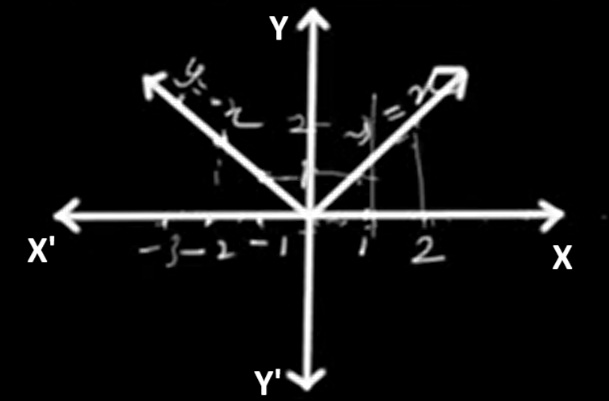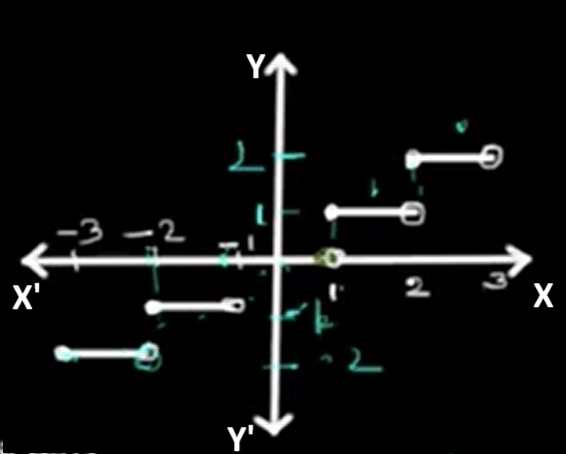The modulus function, often known as the absolute value function, is represented by f(x) = |x|. No matter if x is positive or negative, the output is always a non-negative number.

The graph of f(x) = |x| creates a V-like pattern on the coordinate plane. It is symmetric about the y-axis and increases in both directions from the origin.
You can use any real number as input for this function. Domain: (-∞, ∞)
Since the output is never negative, all values are zero or greater. Range: [0, ∞)
The greatest integer function is denoted by f(x) = ⌊x⌋. It gives the largest whole number that is less than or equal to the input x.

The graph of this function appears as a staircase, known as a step function. Each step is flat, beginning at an integer and ending just before the next one. The function value matches the starting integer of each interval.
All real numbers can be used as input for this function. Domain: (-∞, ∞)
Only integers appear as outputs of the function. Range: {..., -2, -1, 0, 1, 2, ...}
Graphs are a powerful tool for quickly understanding how functions behave. The modulus function forms a simple V-shape, showing how it turns negatives into positives. Meanwhile, the greatest integer function's step-like structure clearly illustrates how values are rounded down to the nearest whole number.
With practice, identifying the domain, range, and graph of these functions becomes intuitive and helps build a strong foundation in algebra.